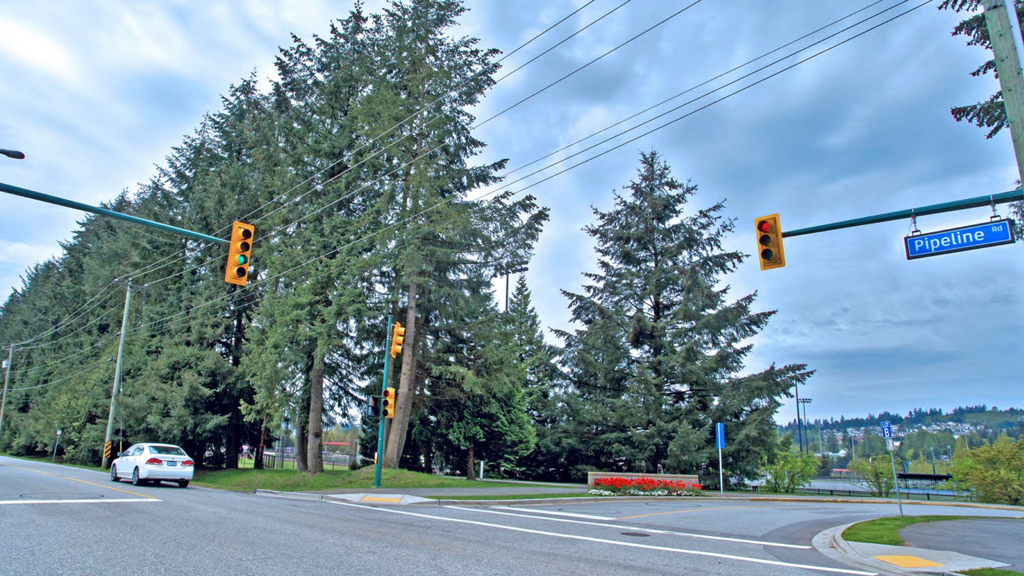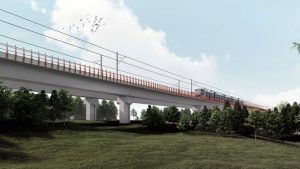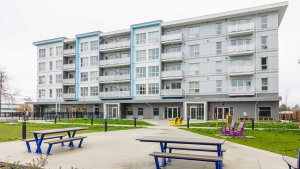Building a massive watermain can be a difficult task under the best of circumstances, but when the pipe has to be installed and run through the downtown core of a busy city, the project gets even trickier.
That’s the challenge that Metro Vancouver will be facing as it finalizes plans for a $678-million pipe through Coquitlam that will increase water capacity to the city and other communities south of the Fraser River.
To install the pipe, which will range in diameter from 2.2 to 3.2 metres, the federation will use both tunnelling and cut-and-cover methods of construction.
Crews will start the project with open-cut along Pipeline Road to the north side of Guildford Way before tunnelling for two kilometres along the Pipeline/Westwood Street corridor. They will revert to cut-and-cover along Dewdney Trunk Road, Sharpe Street and a section of the Lougheed Highway, then across the Riverview Lands to the Cape Horn reservoir.
The alignment option was approved earlier by Coquitlam council. The proposed route was considered the best choice to limit the amount of disruption the project would cause over a five-year construction period to the downtown core. The Metro Vancouver board recently gave its stamp of approval to the project.
Another alignment had been proposed but it was deemed to be too disruptive to traffic and would interfere with the installation of future municipal infrastructure. A city staff report notes the project will result in trees along the west side of Pipeline Road being removed but as part of the project Metro Vancouver has committed to funding a right-of-way and restoring the area after work is completed.
“Watermain construction is anticipated to start in late 2021 with a prebuild section on Pipeline Road between David Avenue and Guildford Way to allow for the City of Coquitlam’s expansion of that section of Pipeline Road in 2022,” explains Bob Cheng, project manager for the watermain construction at Metro Vancouver. “The entire watermain is anticipated to be completed and commissioned in 2028.”
The pipe is a key part of the Coquitlam Lake Water Supply Project that entails building new infrastructure to double the capacity to access, treat and distribute water from Coquitlam Lake. The infrastructure includes a second water intake, water supply tunnel and water treatment facilities. Once completed, the project will help meet the region’s water needs well into the next half of the century.
Construction of the second water intake and a larger supply tunnel is necessary because the current intake system draws water too high up the lake and water flow decreases when the level of Coquitlam Lake drops. It was enlarged and upgraded in 1987, but Metro Vancouver has deemed there will be more need.
The supply tunnel is expected to cost about $2.3 billion and needs to be dug through rock, soil and gravel at the south end of Coquitlam Lake. Preliminary designs for the project are to be started this year. The tunnel will bring fresh water to a treatment facility at the top of Pipeline Road.
“The Coquitlam watermain project is part of a suite of drinking water infrastructure projects in Coquitlam that are essential to the continued delivery of clean, safe drinking water to the communities of the region,” says Cheng. “As a component of the Coquitlam Lake Water Supply Project, it will provide additional transmission capacity to help meet the region’s increasing demand for water well into the future.”
Research by Metro Vancouver has shown while per capita water use in the region has declined, total annual consumption is forecast to increase gradually in the coming years as the rate of population growth exceeds per capita water use reductions.
The watermain project through downtown Coquitlam will involve installing not only a new watermain, but also underground valve chambers and connecting the new main to the regional water supply system.
Cheng says Metro Vancouver and its technical specialists worked alongside the City of Coquitlam to identify a route that would have the lowest impacts on residents and businesses, as well as on the environment and construction costs.
In the end, they opted for a watermain that’s approximately 12 kilometres long. The pipe will essentially connect the Coquitlam watershed to Metro Vancouver’s Cape Horn Pump Station and Reservoir at Mariner Way and Riverview Crescent.
Specific tunnelling technology is to be determined later in the project’s design.
Metro Vancouver intends to provide updates to the community about the construction schedule throughout the detailed planning process and will take steps to minimize impacts to the community wherever possible.
“This includes keeping traffic moving safely and efficiently, finding convenient solutions to property access, monitoring and managing noise, ensuring safety and protecting the environment,” says Cheng.
There will be opportunities for public input, including face-to-face meetings with an assigned community liaison officer, he notes, and this will be supported by ongoing schedule and information updates through fact sheets, project newsletters, emails, onsite signage and the Metro Vancouver website.
Coquitlam Lake presently supplies 33 per cent of the region’s drinking water. That is expected to increase to 60 per cent by the end of the century.











Recent Comments
comments for this post are closed